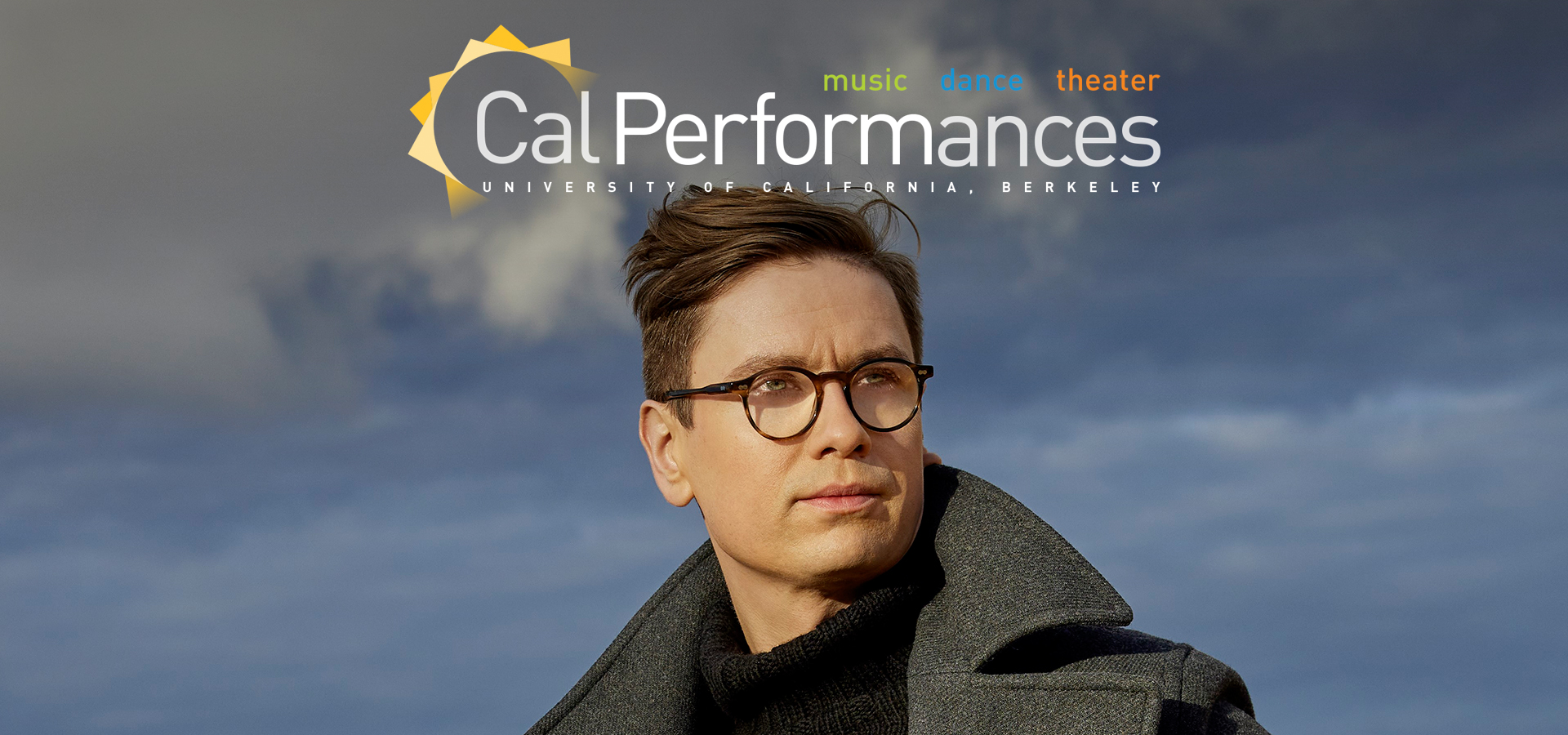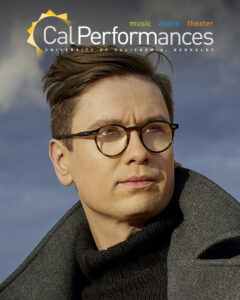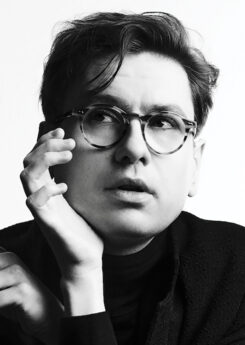Víkingur Ólafsson, piano
J.S. Bach’s Goldberg Variations, BWV 988
Saturday, May 4, 2024, 2pm
Zellerbach Hall
Major support for this performance is provided by The Bernard Osher Foundation. This performance is made possible, in part, by Art Berliner and Marian Lever.
Cal Performances is committed to fostering a welcoming, inclusive, and safe environment for all—one that honors our venues as places of respite, openness, and respect. Please see the Community Agreements section on our Policies page for more information.
This program will be performed without intermission and last approximately 80 minutes.
From the Executive and Artistic Director
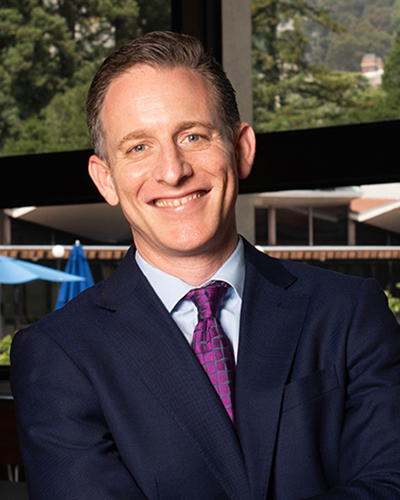
As we enter the final weeks in Cal Performances’ 2023–24 season, it’s natural to take a look back and remember the highlights of a truly remarkable eight months at UC Berkeley. We will all have our favorite moments—instances when a performance seemed to leap off the stage and speak to us directly. But if such experiences are deeply personal, they also all depend on the communal act of gathering together and opening our eyes, ears, and hearts to the miracle of artistic expression. Every day throughout the world, people come to performances to celebrate what it means to be human in an increasingly impersonal world. As this particular season winds down, let me thank each and every one of you for taking part in the magic of great—and live!—music, theater, and dance.
Once again, April means one thing in particular at Cal Performances—Ailey Week—when the renowned Alvin Ailey American Dance Theater returns for its annual spring residency. With its relationship with UC Berkeley now in its 56th year (Ailey has visited campus every non-pandemic year since 1968), the company will present five separate programs from April 2 through April 7. The centerpiece of this year’s residency is the 2024 Gala on Thursday, April 4, with all proceeds benefiting Cal Performances’ artistic initiatives and education programs. During the week, we will also present an Ailey SchoolTime performance for K–12 students and provide an opportunity for alumni of Berkeley/Oakland AileyCamp to reconnect with company members. On opening night, Tuesday, April 2, I’m especially proud that Cal Performances will offer live audio descriptions and a pre-performance haptic tour for blind and visually impaired audience members.
As the season draws to a close in early May, we still have much to look forward to: gifted early-music artists like countertenor Jakub Józef Orliński with the acclaimed ensemble Il Pomo d’Oro (Apr 9) and Jordi Savall with Hespèrion XXI (Apr 12); the thunderous traditional taiko drumming of Drum Tao (Apr 11–12); superb chamber music with the Danish String Quartet and guest cellist Johannes Rostamo (Apr 13) and French ensemble Quatuor Ébène (Apr 16); a duo vocal recital with opera stars (and a husband-and-wife team to boot!) soprano Amina Edris and tenor Pene Pati, with Robert Mollicone at the piano (Apr 23); a highly anticipated return to campus by one of the most adventurous artists on the international pop music scene, the always astonishing Angélique Kidjo (Apr 26); astounding Icelandic pianist Víkingur Ólafsson in a special performance of J.S. Bach’s immortal Goldberg Variations (May 4); and an evening with America’s preeminent humor writer—and frequent guest of Cal Performances—David Sedaris (May 5).
And I must make special mention of the upcoming visit by our dear friends at the Mark Morris Dance Group (Apr 19–21), returning to their West Coast home away from home with a profoundly moving repertory work (2010’s Socrates) and the world premiere of a new Mark Morris creation, Via Dolorosa, set to Nico Muhly’s meditative composition The Street (performed live by harpist Parker Ramsay). In the more than 35 years since the company first appeared at UC Berkeley, Mark Morris’ dancers have treated Cal Performances audiences to the premieres of more than a dozen new Morris works, many of which have gone on to become company classics—don’t miss this chance to be part of dance history!
Finally, I hope you’ll join us on April 16, when we announce our extraordinary 2024–25 season. One major detail has already been announced—the Maria Manetti Shrem and Elizabeth Segerstrom California Orchestra Residency, when Cal Performances and the Philharmonic Society of Orange County will bring the world renowned Vienna Philharmonic and conductor Yannick Nézet-Séguin to California during spring 2025. And I can promise you many more welcome and exciting surprises when full season details are announced.
Again, thank you for joining us this season. I look forward to seeing you again in the fall.
Jeremy Geffen
Executive and Artistic Director, Cal Performances
 As we enter the final weeks in Cal Performances’ 2023–24 season, it’s natural to take a look back and remember the highlights of a truly remarkable eight months at UC Berkeley. We will all have our favorite moments—instances when a performance seemed to leap off the stage and speak to us directly. But if such experiences are deeply personal, they also all depend on the communal act of gathering together and opening our eyes, ears, and hearts to the miracle of artistic expression. Every day throughout the world, people come to performances to celebrate what it means to be human in an increasingly impersonal world. As this particular season winds down, let me thank each and every one of you for taking part in the magic of great—and live!—music, theater, and dance.
As we enter the final weeks in Cal Performances’ 2023–24 season, it’s natural to take a look back and remember the highlights of a truly remarkable eight months at UC Berkeley. We will all have our favorite moments—instances when a performance seemed to leap off the stage and speak to us directly. But if such experiences are deeply personal, they also all depend on the communal act of gathering together and opening our eyes, ears, and hearts to the miracle of artistic expression. Every day throughout the world, people come to performances to celebrate what it means to be human in an increasingly impersonal world. As this particular season winds down, let me thank each and every one of you for taking part in the magic of great—and live!—music, theater, and dance.
Once again, April means one thing in particular at Cal Performances—Ailey Week—when the renowned Alvin Ailey American Dance Theater returns for its annual spring residency. With its relationship with UC Berkeley now in its 56th year (Ailey has visited campus every non-pandemic year since 1968), the company will present five separate programs from April 2 through April 7. The centerpiece of this year’s residency is the 2024 Gala on Thursday, April 4, with all proceeds benefiting Cal Performances’ artistic initiatives and education programs. During the week, we will also present an Ailey SchoolTime performance for K–12 students and provide an opportunity for alumni of Berkeley/Oakland AileyCamp to reconnect with company members. On opening night, Tuesday, April 2, I’m especially proud that Cal Performances will offer live audio descriptions and a pre-performance haptic tour for blind and visually impaired audience members.
As the season draws to a close in early May, we still have much to look forward to: gifted early-music artists like countertenor Jakub Józef Orliński with the acclaimed ensemble Il Pomo d’Oro (Apr 9) and Jordi Savall with Hespèrion XXI (Apr 12); the thunderous traditional taiko drumming of Drum Tao (Apr 11–12); superb chamber music with the Danish String Quartet and guest cellist Johannes Rostamo (Apr 13) and French ensemble Quatuor Ébène (Apr 16); a duo vocal recital with opera stars (and a husband-and-wife team to boot!) soprano Amina Edris and tenor Pene Pati, with Robert Mollicone at the piano (Apr 23); a highly anticipated return to campus by one of the most adventurous artists on the international pop music scene, the always astonishing Angélique Kidjo (Apr 26); astounding Icelandic pianist Víkingur Ólafsson in a special performance of J.S. Bach’s immortal Goldberg Variations (May 4); and an evening with America’s preeminent humor writer—and frequent guest of Cal Performances—David Sedaris (May 5).
And I must make special mention of the upcoming visit by our dear friends at the Mark Morris Dance Group (Apr 19–21), returning to their West Coast home away from home with a profoundly moving repertory work (2010’s Socrates) and the world premiere of a new Mark Morris creation, Via Dolorosa, set to Nico Muhly’s meditative composition The Street (performed live by harpist Parker Ramsay). In the more than 35 years since the company first appeared at UC Berkeley, Mark Morris’ dancers have treated Cal Performances audiences to the premieres of more than a dozen new Morris works, many of which have gone on to become company classics—don’t miss this chance to be part of dance history!
Finally, I hope you’ll join us on April 16, when we announce our extraordinary 2024–25 season. One major detail has already been announced—the Maria Manetti Shrem and Elizabeth Segerstrom California Orchestra Residency, when Cal Performances and the Philharmonic Society of Orange County will bring the world renowned Vienna Philharmonic and conductor Yannick Nézet-Séguin to California during spring 2025. And I can promise you many more welcome and exciting surprises when full season details are announced.
Again, thank you for joining us this season. I look forward to seeing you again in the fall.
Jeremy Geffen
Executive and Artistic Director, Cal Performances
About the Program
Goldberg Variations
Johann Sebastian Bach (1685–1750)
In the introduction to his remarkable CD of Bach’s Goldberg Variations, Icelandic pianist Víkingur Ólafsson touches on the often-overlooked duality of this formidable work’s appeal: it is designed not only to astound but to entertain the listener.
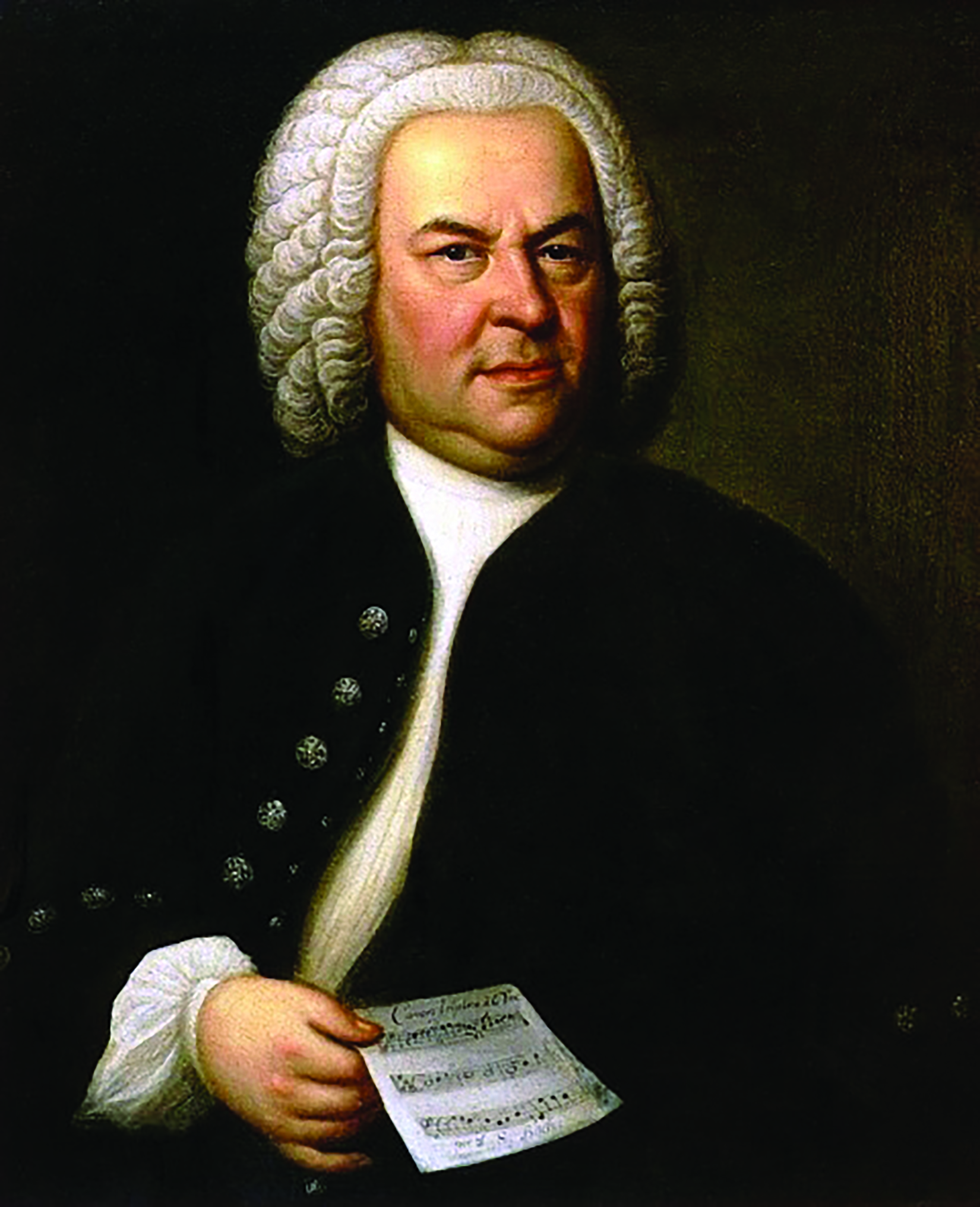
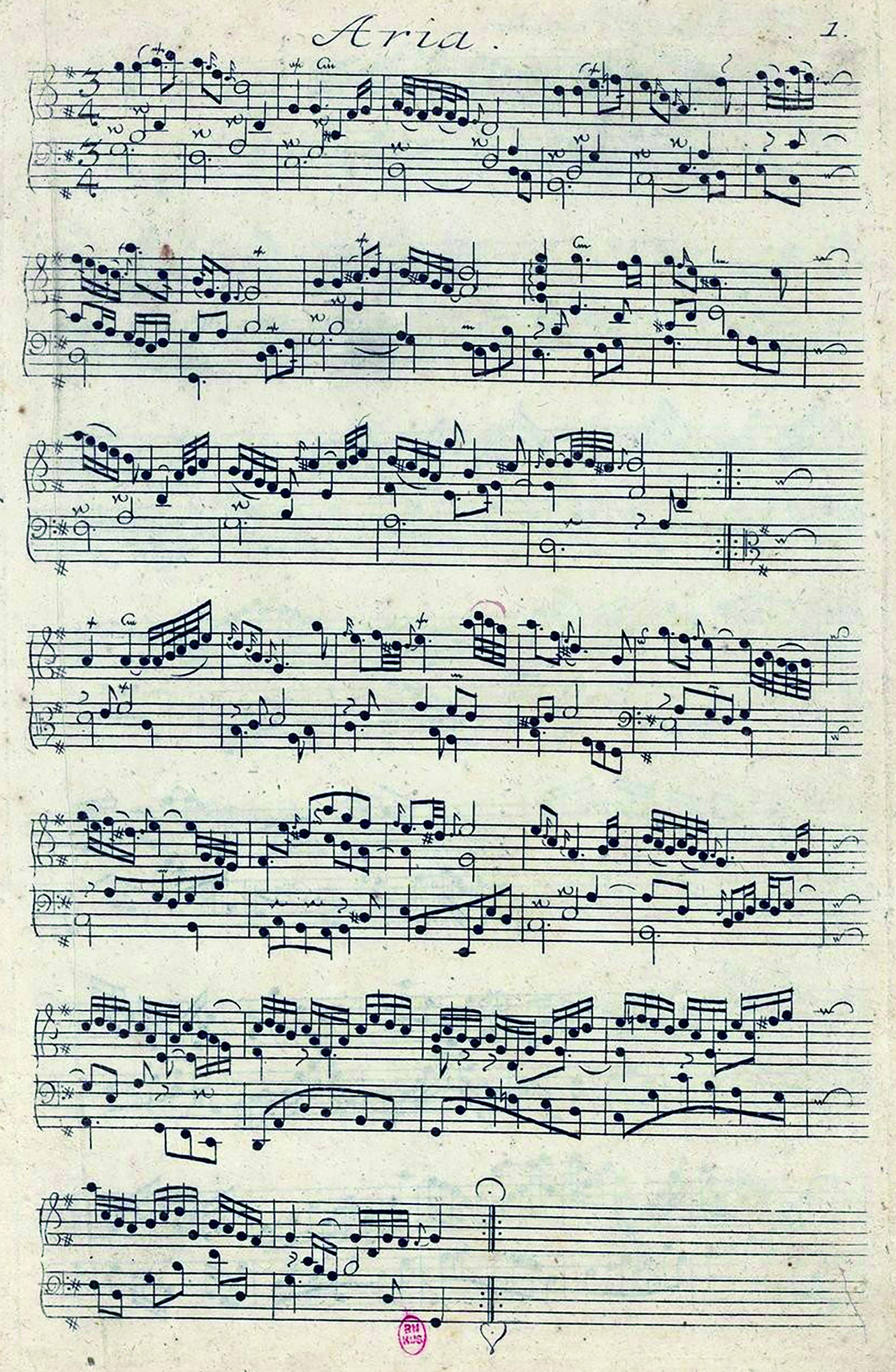
“In the Goldberg Variations, the one thing that rivals Bach’s complete intellectual mastery of his craft is his inspired, creative playfulness. In 30 variations, built on the humble harmonic framework of a simple, graceful aria, Bach turns limited material into boundless variety like no one before or since. The Goldberg Variations contain some of the most virtuosic keyboard music ever written, some of the most astonishingly brilliant uses of counterpoint in the repertoire, and countless instances of exalted poetry, abstract contemplation, and deep pathos—all within immaculately shaped structures of formal perfection. In a paradox that only seems to make sense in the light of Bach’s particular Baroque genius, the relentlessly strict formal premise he sets himself turns out to afford him sublime creative freedom—and he clearly revels in it. When we write and talk about the Goldberg Variations, we tend to focus on Bach the profound thinker, assiduous craftsman, and visionary musical architect. But when we play and listen to [them], we cannot but notice that we are also in the company of Bach the cheerful, at times ecstatic, master improvisor; Bach the greatest keyboard virtuoso of his time.” A man who could choose a mischievous “Quodlibet”—an improvisatory contrapuntal game based on popular-song riffs—to be his ultimate 30th variation.
THE WORK’S ORIGINS
Bach did not name this consummate example of the theme-and-variations form the “Goldberg Variations”; instead in his 1741 publication of the work, he gave it the more straightforward title “Aria with diverse variations for a harpsichord with two manuals. Composed for Music Lovers to Refresh their Spirits.” (translated from the German). In his pioneering biography of the composer written in 1802, Johann Forkel told a delightful story about the work’s origins, which, though it has since been discredited, has clung to it and provided its popular name.
In Forkel’s story, Count Hermann Carl von Keyserlingk asked Bach to give him some clavier pieces of “such a gentle and somewhat lively character that he might be a little cheered up by them in his sleepless nights.” The insomniac nobleman kept his private musician—the young Johann Gottlieb Goldberg, a former pupil of Bach’s—awake to play the harpsichord in his antechamber while he tossed and turned.
But even though Keyserlingk was indeed a patron of Bach’s who had helped secure the post of Hofkomponist to the Saxon court in Dresden for him, would Bach create such a complex masterpiece for this mundane purpose? And if so, why didn’t he dedicate the work to the Count as court etiquette demanded? And would he write these spectacularly difficult variations for the then 14-year-old Goldberg to play? Nevertheless, this story was embraced for nearly two centuries.
Though Bach may have presented his patron with a copy of the Goldberg Variations, its origins were much loftier. From 1731 to 1741, Bach had published a series of four keyboard volumes that demonstrated his profound knowledge of counterpoint and the technical possibilities of keyboard instruments. Each collection bore the modest title Clavier-Übung or “Keyboard Practice,” but they contained musical wonders, The fourth and final volume contains only the Goldberg Variations, which indicates how important a summation of his art Bach considered them to be.
Bach’s competitive streak may also have played a role in the birth of the Goldberg Variations. In 1733, his rival Handel published an aria with 64 variations built over the aria’s bass line, which Bach undoubtedly knew. So with his 30 variations created on a longer and more complex bass, Bach was able to produce a far greater and more comprehensive work than what Handel had attempted.
FORMAL STRUCTURE
The Goldberg Variations spring from a beautiful, pensive Aria in the style of the slow, triple-meter saraband dance; it is made up of two sections that are each 16 measures long and are repeated. Perhaps written years before the variations, this aria was a favorite of Bach’s second wife, the soprano Anna Magdalena Bach, who copied it into one of the famous musical notebooks her husband created for her. But Bach did not create his variations on the Aria’s lovely, richly ornamented melody, but on its bass. Like a Baroque chaconne or passacaglia, this bass line is repeated basically unaltered throughout the variations while musical wonders are woven above. All but three of the variations are in G major; the three exceptions move to G minor.
The 30 variations are grouped in sets of three, comprising a usually slower character or genre piece (often a dance); a technically demanding, quick-tempo piece in the brilliant style of a toccata; and a canon increasing in complexity as the chasing voices move progressively farther apart. After Variation 15, Bach marks the beginning of the second half with a lavish French overture variation. A return of the Aria closes the work.
As his original title indicates, Bach wrote the Goldberg Variations for a harpsichord with two manuals. Nevertheless, this virtuosic work attracts many ambitious pianists, who must be willing to tackle the added challenge of intricate hand crossings to perform the passages where one of the hands would have moved to the second manual.
A CLOSER LISTEN
Variations 1–3: Contrasting with the Aria, the first variation is a lively dance in three beats filled with intriguing rhythmic syncopations. Also dancelike, the courtly Variation 2 poises two freely imitative upper voices atop a non-stop bass part. Variation 3 is the first canon, this a quite simple one in which the two upper voices chase each other in unison, supported by a bass voice that is equally active. The choice of 12/8 meter fills this elegant music with graceful triplet rhythms.
Variations 4–6: In the style of the three-beat passepied dance, Variation 4 is lively and sparkling, with crisp, short phrases instead of flowing lines. Imitative counterpoint flashes quickly between the voices. Using only two voices, Variation 5 is the first display of high-speed virtuosity in toccata style and requires frequent hand crossing. One hand plays blindingly fast sixteenth notes, while the other performs staccato leaps; frequently the two hands change roles. Variation 6 is the second of the canons, this time a canon in which the following voice enters one step higher than the first voice. Like the preceding variation, it is powered by fast sixteenth notes.
Variations 7–9: Variation 7 brings us a French-style gigue in bouncing 6/8 time. A sparkling variation for two voices, its French flourishes add to its playful charm. Variation 8 is another formidable piece of high-speed virtuosity for two voices. On a harpsichord with two manuals, it would not be so difficult, but the amount of hand crossing involved on the piano make it a considerable challenge of dexterity and coordination. The mood eases for Variation 9, a canon at the third, in which the following voice enters two steps below the first. This canon has a gracious quality since parts played together in third intervals are very consonant and pleasing to the ear.
Variations 10–12: The genre chosen for Variation 10 is the fugue, or in this case, a somewhat less rigorous fughetta in which not all four voices complete the subject. Nevertheless, with its subject launched by two bristling trills, this is a mighty impressive piece to hear. The fleet perpetual motion of the two voices in Variation 11 were designed to be played on two manuals, making this one of the work’s major challenges for a pianist to execute. Variation 12 deploys another approach to the canon, which this time is at the fourth. The following voice plays an inversion of the first voice’s melody—in other words, it’s upside down. With its propulsive rhythms, this is one of the most attractive of the canons.
Variations 13–15: Returning to the Aria’s three-beat saraband style, Variation 13 is one of the work’s loveliest, with its gorgeously decorated soprano part bearing the gently spinning melody and a lower voice adding some subtle rhythmic conflict. Variation 14 shows us Bach displaying his virtuosity with joyous abandon. Launched with a three-octave leap from the bass to the treble registers, it requires elaborate hand crossing throughout its large range. A passage of giggling short figures adds jocular humor. By contrast, No. 15’s canon at the fifth is one of the Goldberg’s most solemn variations as it moves to G minor for the first time. The motive being imitated shifts back and forth between its original and inverted form; chromatically altered pitches poignantly destabilize the harmonies. In the words of Glenn Gould, a great champion of this work: “It’s the most severe and rigorous and beautiful canon…. It’s a piece so moving, so anguished—and so uplifting at the same time—that it would not be in any way out of place in the St. Matthew Passion.”
Variations 16–18: Bach divided his variations into two parts, and Variation 16 announces the beginning of the second with a very grand French overture. Its first portion carries the overture’s slow section with its dotted rhythms and abundant trills; the second section presents the overture’s mandatory music of quick-tempo counterpoint in fugal style. Designed to be played on two manuals, Variation 17 is another racing toccata of scales and arpeggios, again more difficult on the piano than the harpsichord. Variation 18 is a brisk canon at the sixth, with the lead voice entering on the beat and the chasing voice entering off the beat in the same measure to produce playful rhythmic tension.
Variations 19–21: Variation 19 is a fast three-beat dance for three voices that is a rhythmic game of syncopations. Rhythmic games are intensified to the max in Variation 20, in which each hand is a fraction off from the other. All of this is accomplished at top speed and with much hand crossing on the piano. Aided by his two manuals, Bach here is reveling in his virtuosity. The second variation in G minor, No. 21 immediately clears away any frivolity. It is a slow, meditative canon at the seventh: an interval that tends to destabilize its key. This effect is strengthened by Bach’s lavish use of chromatically altered notes, which beautifully color the scale patterns.
Variations 22–24: In case the elaborate bass parts we’ve been hearing make us forget how the Aria’s ground bass goes, Variation 22 brings it back in clearly recognizable form. Above it is fugal writing for the other three voices. Variation 23 is another breakneck race with the two voices chasing each other just half a beat apart with descending scales followed by ascending scales. The scales then break apart into little bursts. In a pastoral 9/8 siciliano rhythm, Variation 24 is a relaxing canon at the octave with the lead voice followed by two other voices above and below. Long trills adorn the opening of the second section.
Variations 25–27: If one were asked to choose which variation is the greatest of the 30, many musicians would select No. 25, which harpsichordist Wanda Landowska called “the black pearl.” By far the longest, this is the final G-minor variation: a beautiful, contemplative aria for soprano set in a very slow Adagio tempo. Bach’s searching chromaticism here points ahead to the harmonic language of the 19th century. Peter Williams, author of a recent book analyzing the Goldbergs, writes that “the beauty and dark passion of this variation make it unquestionably the emotional high point of the work.” Brightening the mood, the finger exercises of Variation 26 pair nonstop sixteenth notes against a stately dotted-rhythm theme, both transferred seamlessly from one hand to the other. This launches a rush to the finish line immediately picked up by Variation 27, a canon at the ninth. All the previous canons have included an accompanying bass part; this one is a pure canon just between the two voices.
Variations 28–30: The last three variations open with the extraordinarily challenging No. 28, in which trills are played by one hand or the other in almost every measure. Alongside this, an angular, wide-ranging melody is etched out in tiny stabs. Written for two manuals, this is the ultimate hand-crossing test. Somewhat related thematically, Variation 29 is a whirlwind toccata made up of harshly hammered chords and gossamer triplets, all requiring virtuosic agility. If it followed the pattern Bach has established, No. 30 should be a canon. Instead, he gives us a variation that is much less rigorous: a “Quodlibet” or “what you like.” Such entertainments were extremely popular in Bach’s day and especially in a Bach household crowded with talent. They featured popular songs mashed together in a game of musical improvisation created by the whole company. Two songs featured in this “Quodlibet,” are “Ich bin solang bei dir g’west” (“I’ve been so long away from you”) and “Kraut und Rüben haben mich vertrieben” (“Cabbage and turnips have driven me away”). This sturdy, tuneful variation provides a chance to take a relaxing breath before the Aria returns.
Aria: Listening to the Goldberg Variations is like embarking on an epic journey. But now the journey is over, and we’re coming home again. In Ólafsson’s summation: “The return of the Aria is a final surprise, inevitable only in retrospect. Like meeting an old and dear friend after a long separation, it somehow feels like it never left at all. And of course, at least harmonically, it never did. Not a note has been altered, but it has changed—or, more accurately, we have.”
—Janet E. Bedell © 2024
Janet E. Bedell is a program annotator and feature writer who writes for Carnegie Hall, the Metropolitan Opera, Los Angeles Opera, Caramoor Festival of the Arts, and other musical organizations.


